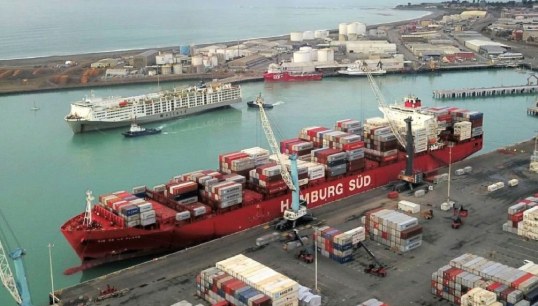
Accident investigators have stressed the importance of having sufficient crew to safely undertake mooring and unmooring operations following an incident in which a seafarer suffered serious injuries.
New Zealand’s Transport Accident Investigation Commission (TAIC) issued the warning in a report on an accident onboard the Singapore-flagged containership Rio De La Plata. During the incident, which took place as the vessel prepared to leave the port of Timaru in November 2020, a seaman was dragged into a winch after being caught in a rope.
The TAIC report notes that mooring is a ‘complex and dangerous operation that can have serious consequences’ if things go wrong. ‘However,’ it adds, ‘the focus is often placed on the risks associated with mooring ropes being overloaded and breaking and the identification of safe zones at mooring stations. Unmooring operations, such as those carried out at the time of the accident, are equally dangerous and need to be carefully assessed to mitigate any unsafe situations before they become serious.’
In this case, the injured crewman had probably lost full situational awareness ‘while being completely engaged in communicating and handling the rope’. The seafarer had stepped too close to the winch drum and his left hand was trapped between the rope and the winch, causing him to be dragged into the storage drum.
The TAIC said the AB operating the winch had no direct line of sight to the two seamen working and handling the ropes on the foredeck and the team had to rely on verbal and/or hand signals to communicate.
‘Communication between the members of the forward mooring team was challenging because of equipment blocking the line of sight and noise levels due to the bow thrusters and the winches being operated at the time,’ the report adds.
The TAIC said the risk of the blind spot had been identified and a risk assessment had also identified a lack of sufficient personnel to conduct mooring and unmooring operations as a hazard. However, the forward mooring team on the Maersk-operated ship had been reduced from four members to three when a deck cadet signed off about four weeks before the accident.
‘The presence of a fourth person who could stand back and monitor the actions of those handling the ropes, and communicate directly with the winch operator, would have very likely reduced the risk of an accident occurring,’ the TAIC concluded.
The investigation also revealed that the risks faced by the crew were increased because Rio De La Plata was using a mooring rope that was outside of the manufacturer’s design criteria, being 20m longer than the maximum design length of 200m, and was not stowed correctly on the drum. Two transverse bars which ran across the winch reduced the clearance available between the storage drum and deck and increased the risk of the rope getting stuck at the bar and should have been removed when the winch was installed in 2008.
The report recommends that the flag state, Singapore, investigates its audit processes to see if they can be further developed to identify weaknesses in safety management systems and their practical implementation onboard.
Tags
